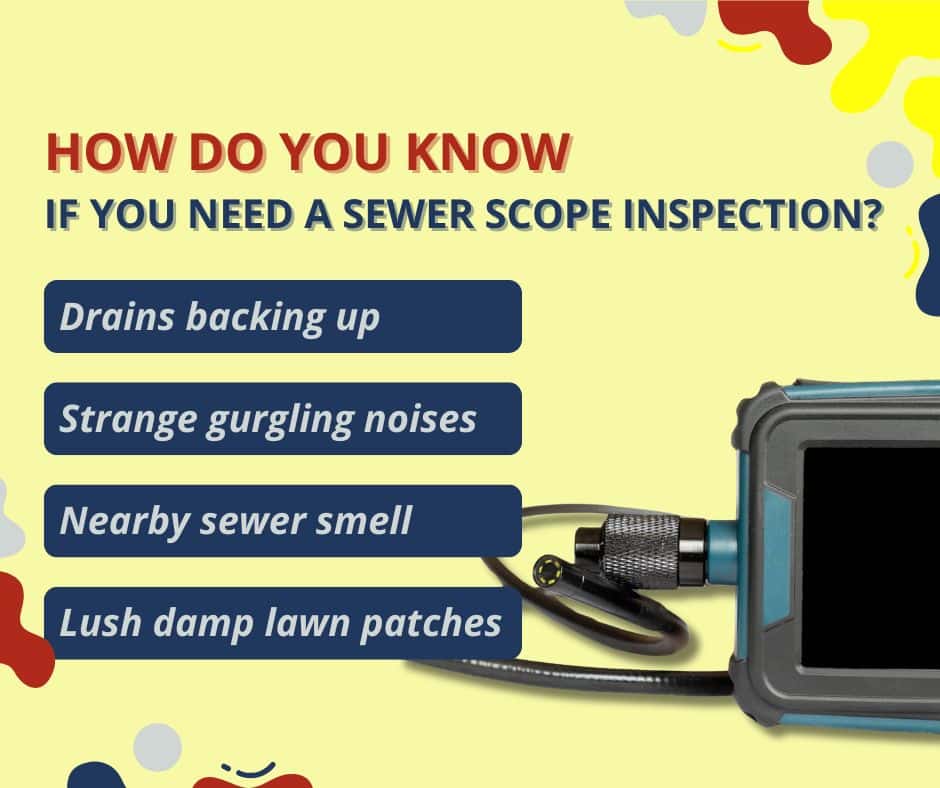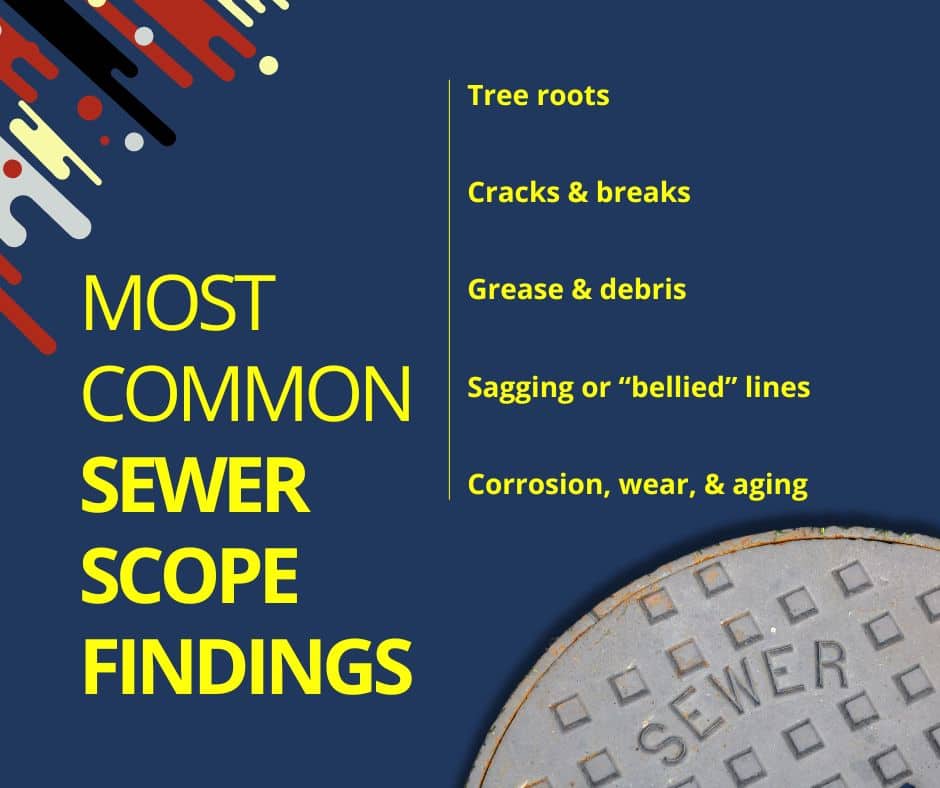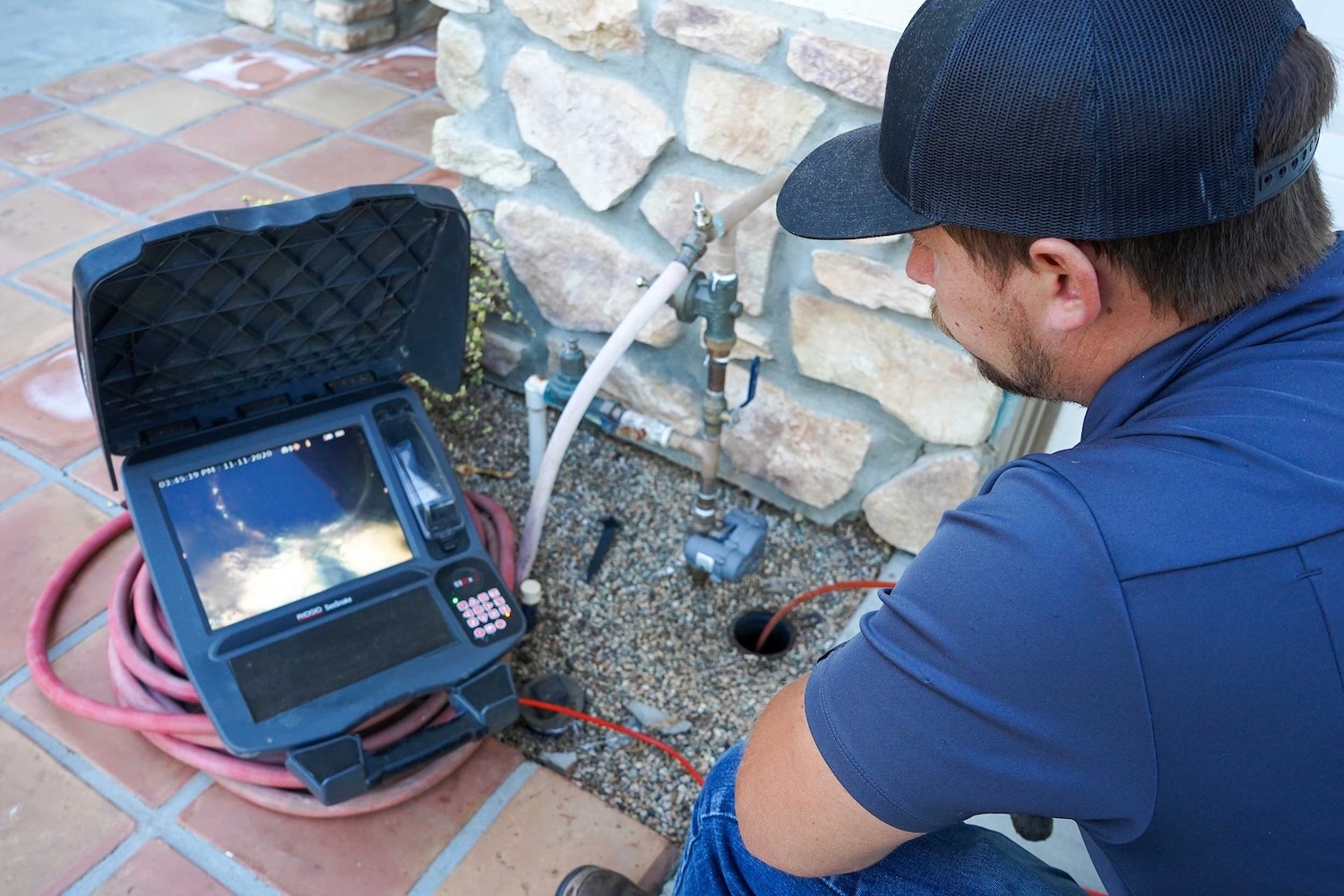If you’ve ever had a clogged drain or sewage backup, you know it’s not just gross. It can wreck your day and cost a lot to fix. A sewer line inspection can make all the difference and reveal hidden damage in one of your home’s most important (but overlooked) parts.
Since the worst problems are often the ones you can’t see coming, let’s walk through what this inspection involves, what it can uncover, and why it matters more than most people think.
Why Homeowners (And Buyers) Shouldn’t Skip This
Most of your plumbing is out of sight, and your sewer line is buried deep beneath your yard. If it’s in bad shape, there’s usually no way to know until a problem shows up inside your house—or until a plumber hands you a repair bill with five figures on it.
A sewer scope inspection uses a small camera to go right into the pipe, giving a clear view of what’s going on below ground. It’s quick, low-impact, and a lot more affordable than replacing a sewer line after things go wrong.

How Do You Know It’s Time?
Sometimes, sewer problems start with small warning signs. Things that feel annoying, but not urgent. You might notice:
- Drains backing up more often
- Strange gurgling noises from toilets or sinks
- A strong sewer smell near your home
- One patch of grass that’s greener or wetter than the rest
And in many cases? There are no obvious signs at all. That’s why sewer line inspections are especially important if you’re buying a house. There’s no way to see what’s happening underground without a camera.
What the Inspection Can Reveal
At P.I. Home Inspections, we’ve seen all kinds of issues come up during a sewer line inspection. Some of the most common include:
Tree roots breaking into the pipe
Roots naturally search for moisture—and your sewer line is an open invitation. Once they get in, they grow fast and can clog or even break the pipe.
Cracks, breaks, or collapsed sections
Older pipes made of clay, cast iron, or Orangeburg are more likely to fail over time. Soil shifting or construction nearby can also cause damage.
Sagging or “bellied” lines
Sometimes, a part of the pipe sinks lower than the rest, creating a dip where waste collects. This can lead to slow drains and future blockages.
Grease and debris buildup
Even in newer homes, grease, wipes, and other debris can stick to the inside of the pipe and cause clogs that get worse over time.
Corrosion and general aging
Pipes don’t last forever. Over the years, materials break down—even if you’ve never had a problem before.
These are the types of issues that a sewer scope can catch before they lead to big repairs—or worse, a total line replacement.
What Happens If You Ignore the Problem?
It’s easy to put off something you can’t see. But sewer line damage isn’t just a plumbing problem—it can affect your whole home.
If a damaged line goes unnoticed, wastewater can back up into tubs, toilets, or sinks. It can leak under your home or into your yard. It can cause foundation issues.
And when things get really bad, you’re looking at excavation, pipe replacement, and a much higher repair bill than if it had been caught early.
And if you’re a homebuyer? Discovering sewer issues after closing can mean paying out of pocket for repairs you didn’t see coming.

Can You Prevent Problems?
You can’t control what’s already underground, but you can take steps to reduce your risk:
- Don’t flush wipes, paper towels, or hygiene products—even if they say “flushable.”
- Avoid pouring grease or food scraps down the drain.
- Know where your sewer cleanout is in case access is ever needed.
- Keep large trees and shrubs away from where your sewer line runs.
- Schedule routine plumbing checks, especially in older homes.
And of course, if you’re planning to buy a home, always ask about a sewer line inspection. It’s a small step that can reveal a big problem.
When to Call a Professional
Not all plumbing issues need a sewer scope, but when they do, timing matters. We recommend a sewer line inspection if:
- You’re buying a home (especially an older one)
- You’ve noticed repeated clogs or backups
- You have mature trees in the yard
- Your home is more than 30 years old
- You want clarity about what’s going on underground
At P.I. Home Inspections, we use high-definition cameras to scope the full length of the main line. You’ll get a video of the inspection and a clear explanation of what we find—no guesswork, no upselling, just the information you need.
Conclusion
A sewer line inspection doesn’t take long, but it can save you from major stress, surprise costs, and preventable damage. Whether you’re buying a house or just keeping up with your current one, it’s one of the smartest inspections you can schedule.
P.I. Home Inspections offers professional, non-invasive sewer scope inspections that help you see the full picture. If you’re ready to handle issues before they catch you off guard, reach out today to schedule your inspection.

